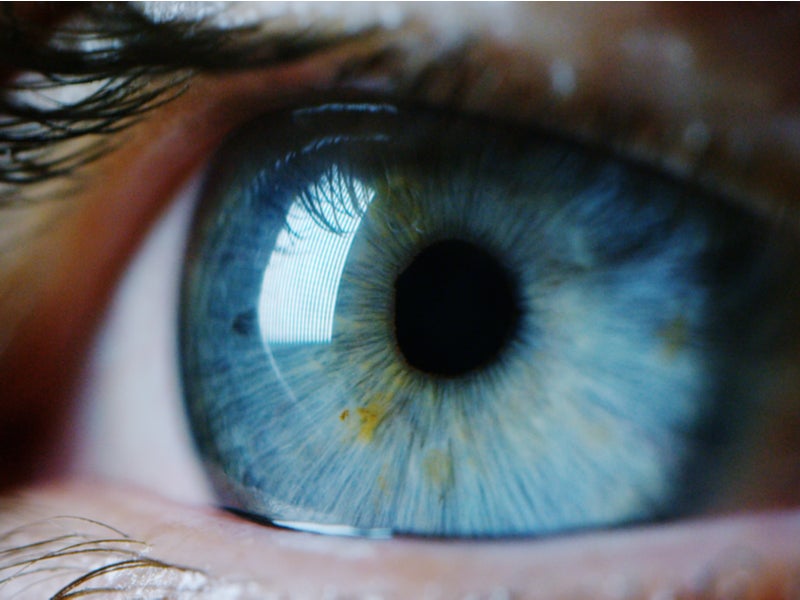
Most people take their eye health for granted. That is until they have to think about how they’d feel if something went wrong. Research published in JAMA Ophthalmology in October 2019 found participants would choose four and a half years with perfect health compared to ten years with complete blindness. Sight is a valuable thing and vision problems can have a huge impact on quality of life. Around the world, more than 2.2 billion people currently live with a form of sight impairment, according to the World Health Organization (WHO).
Vision loss is growing as the world’s population ages. As people live longer, more are losing their sight, as a result of conditions like glaucoma and retinal disorders.Vice-president, medical affairs EMEA at eye health pharmaceutical company Santen Dr Sophia Pathai says that for many, sight loss can be devastating.
“Sight is arguably the most integral of our senses,” she says. “Loss of visual function results in debilitating loss of independence and various comorbidities that have a major impact on resources.”
Around one billion people worldwide have a form of vision impairment that could have been prevented or is yet to be addressed. Glaucoma, a common condition where the optic nerve is damaged is a leading cause of blindness if it not diagnosed and treated early. But a major challenge is that the disease often progresses slowly and with very minor symptoms, so patients don’t treat the problem until it’s too late. More awareness of the disease is crucial.
But a recent review by Public Health England suggested screening whole populations for the condition wouldn’t be cost effective as tests to accurately diagnose the disease early aren’t yet available. There is an unmet need for better diagnostic solutions for this condition and other eye health problems.
Eye-opening tech
Pathai believes telehealth solutions of the future will improve access to a range of eye care services, particularly for those living in rural and remote areas. And these tools could provide a more efficient delivery of healthcare services, freeing up clinical resources and allowing doctors to spend more time with patients.
The potential of digital solutions in ophthalmology is starting to be realised. In 2018, the FDA approved the first artificial-intelligence-based device to screen for and monitor diabetic retinopathy. Plus, in one recent study, deep learning was found to perform better than doctors in detecting the condition. While a machine learning model to predict visual acuity in macular degeneration patients receiving antibody treatment ranibizumab has been developed by scientists.
Vice-president, pricing and market access (EMEA) at Santen Frederic Ernst reveals that the firm is currently assessing how deep learning and artificial intelligence (AI) can lead to more years of vision for patients.
“Our aim is to develop digital healthcare applications that complement and accompany therapy with our medicines,” he reveals.
Earlier this year, the company announced its participation in the International Telecommunication Union’s (ITU) Be He@lthy, Be Mobile (BHBM) initiative. The scheme was set up by the WHO and the ITU in 2012. BHBM works with governments to scale up mobile health services for noncommunicable diseases and their risk factors.
“As the first global partner of BHBM in ophthalmology, we will be focusing on incorporating new technologies and providing support to people with eye conditions,” reveals Ernst.
BHBM isn’t Santen’s only digital venture. The pharmaceutical company announced in February its partnership with Verily, formerly a division of Google X. One of Verily’s first projects was a smart contact lens that could measure the wearer’s glucose levels. It never made it to market, but the company continues to focus on tech-enabled solutions for eye conditions.
Ernst won’t reveal too much about the partnership but says it will combine Santen’s expertise in the ophthalmology field and Verily’s AI knowledge to improve eye health for people all over the world. This initiative is also designed to raise awareness of the prevention and management of lifestyle diseases through the use of digital devices.
“This partnership is driven by a mission to improve eye health for people everywhere, starting by developing tools and technology to support modern ophthalmology practice worldwide,” says Ernst. “It plans to develop and commercialise unique ophthalmic devices, including comprehensive Internet of Things (IoT) medical devices.”
Look to the horizon
At the same time, Santen is expanding its genomic drug discovery project. The pharmaceutical company recently announced a collaboration with Oxford Biomedica, which focuses on the research and development of gene therapy products for the treatment of inherited retinal diseases.
“These diseases, which disproportionately affect children and young adults, are a group of rare disorders in which mutation results in vision loss or blindness,” says Ernst. “Through information exchange and joint study efforts with renowned genomic drug discovery external research institutes, we are deeply involved in a number of early stage research projects ongoing worldwide.”
Pathai believes there is a lot of potential in the digital world for ophthalmology, especially as a significant number of diseases occur with eye conditions, from diabetes to infectious diseases. Though she cautions that before widespread use of telehealth solutions can occur, there are practical hurdles such as legislative measures, data concerns and healthcare budgets to overcome. But there is still plenty to be optimistic about, she says, from the recent studies which have shown that AI can detect clinically significant eye symptoms, to the rise of smartphone access worldwide. It is estimated that almost the entire world population lives within reach of a mobile phone signal.
“The saying the ‘eyes are the window to the soul’ reflects why we are passionate about bringing solutions that not only maintain vision but allow us to embrace all aspects of life, for patients and ophthalmologists alike,” Pathai concludes.



